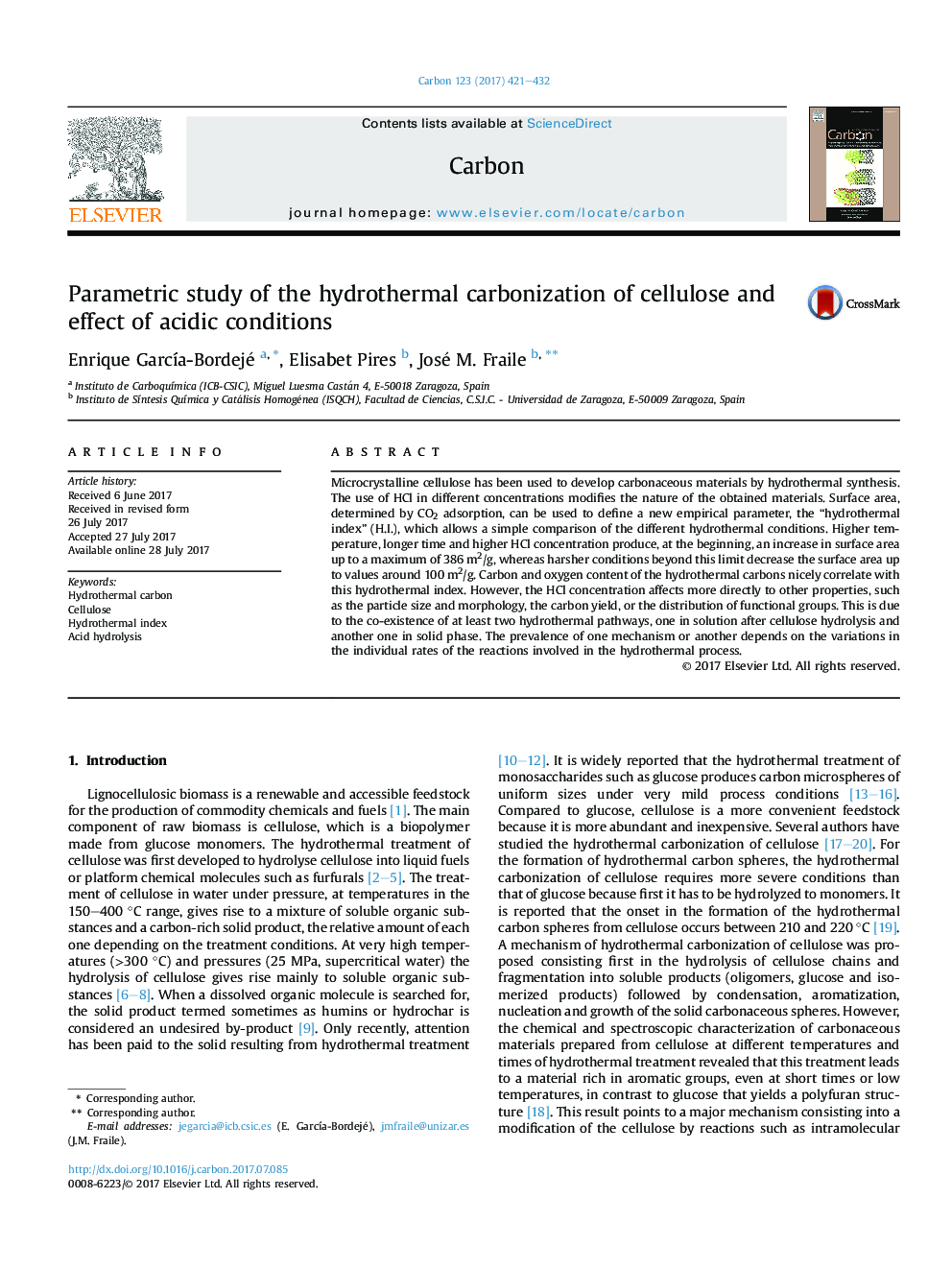| Article ID | Journal | Published Year | Pages | File Type |
|---|---|---|---|---|
| 5431574 | Carbon | 2017 | 12 Pages |
Microcrystalline cellulose has been used to develop carbonaceous materials by hydrothermal synthesis. The use of HCl in different concentrations modifies the nature of the obtained materials. Surface area, determined by CO2 adsorption, can be used to define a new empirical parameter, the “hydrothermal index” (H.I.), which allows a simple comparison of the different hydrothermal conditions. Higher temperature, longer time and higher HCl concentration produce, at the beginning, an increase in surface area up to a maximum of 386Â m2/g, whereas harsher conditions beyond this limit decrease the surface area up to values around 100Â m2/g. Carbon and oxygen content of the hydrothermal carbons nicely correlate with this hydrothermal index. However, the HCl concentration affects more directly to other properties, such as the particle size and morphology, the carbon yield, or the distribution of functional groups. This is due to the co-existence of at least two hydrothermal pathways, one in solution after cellulose hydrolysis and another one in solid phase. The prevalence of one mechanism or another depends on the variations in the individual rates of the reactions involved in the hydrothermal process.
Graphical abstractDownload high-res image (237KB)Download full-size image
